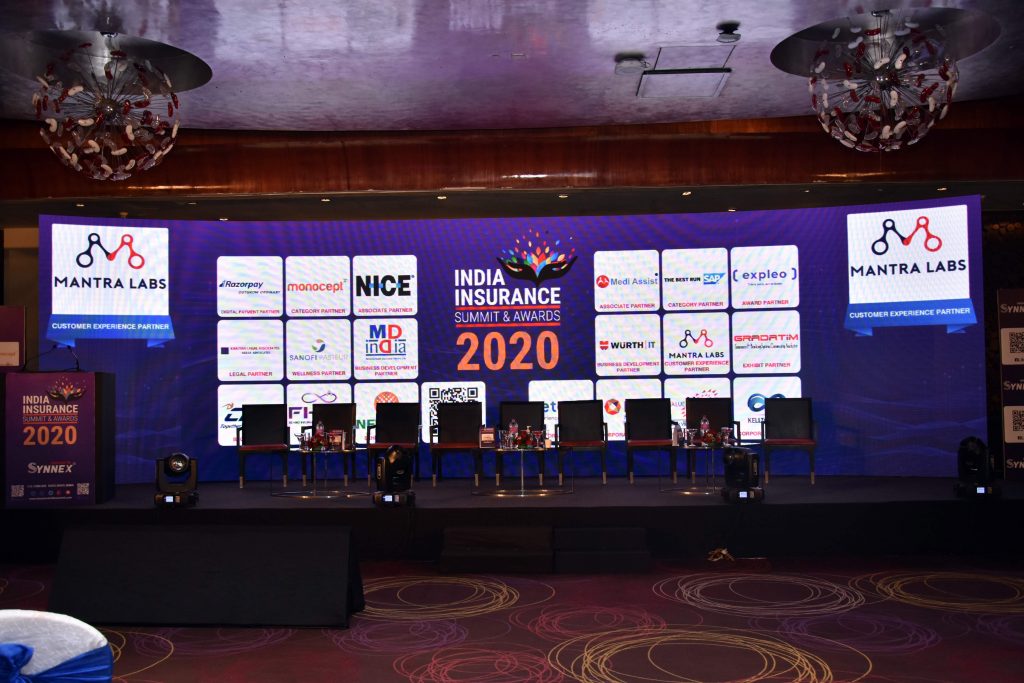The India Insurance Summit & Awards 2020, themed around technology and innovations in Insurance concluded on March 13th in Mumbai. The event witnessed enthusiastic participation from corporates like Future Generali India Life Insurance, ICICI Lombard, Aditya Birla Sun Life Insurance, Pramerica Life and many more. The stalwarts from the Insurance industry addressed the tech-powered revolution that is soon to happen with Digital 2.0. Here are 4 key takeaways from IISA that highlight the future of Insurance and InsurTech.

1. Digital 2.0 is on rise
Accenture’s research report on the post-digital era reveals that 94% of businesses have accelerated their digital transformation over the past three years. While the era of Digital 1.0 was focused on the mobile, simplified design and a wider range of applications, Digital 2.0 extends the ecosystem into the next-gen interface which relies on anywhere, anytime and any platform mindset.
The traditional insurance distribution channels have already received a digital facelift; with Digital 2.0, they tend to become more consumer-focused and experience-driven. Insurers are empowering distributors to deliver next-gen experiences to customers and deliver products & services for Micro-Moments.
[Related: How technology is transforming Insurance distribution channels]
2. Millennials are characterized by Micro-Moments
“Micro-Moment is an intent-rich moment when a person turns to a device to act on a need — to know, go, do, or buy” (Google).
An average consumer experiences hundreds of micro-moments throughout the day. More than 91% of smartphone users use mobile phones for inspiration in the middle of a task. People are becoming more research-obsessed and almost every decision made online is informed. For instance, 51% of digital consumers have purchased from a company other than their intended brand, solely based on the information they find online. Moreover, 62% of people are more likely to take an action (like purchase decision) right away even in the middle of some other task.
Earlier, customers used to view the lowest priced product as their best value for money option. Now, the customer’s ability to research is leading to higher-priced products being bought because of the greater perceived value of the product.
As a notion, Insurance is not bought; it’s sold. Thus, micro-moments present immense opportunities to engage with the customer during their buying journey. By leveraging the right points of interaction, Insurers can propose relevant and personalized insights to win customers.
[Related: Millennials and Insurance beyond convenience]
3. Online is best for small-ticket insurance
Small-ticket insurance (or bite-size cover) focuses on the specific needs of consumers. These are characterized by low premium, low cover and hence lower profit margins. Thus, offline distribution, which involves agents and brokers isn’t feasible. Online channels with emerging API-based distribution and marketplaces are best for distributing small-ticket insurance products. In India, companies like Toffee Insurance, MobiKwik and Digit Insurance provide bite-size insurance.
Within life insurance, term plans are sold the most online. Insurers have observed that online customers buy more and stay longer with the brand as compared to offline customers. In general, online products are more compelling. The key is — small market, great margins and greater profitability.
Moreover, small-ticket insurance delivers two-fold benefits. Consumers, who haven’t bought an insurance product before, need not pay lengthy premiums (also beneficial to Insurers for customer acquisition); while Insurers find it easier to predict customer behaviour online, allowing them to underwrite risks more accurately.
4. Technology will enhance post-sale moments of truth
Insurers have already started to utilize technologies like NLP to build self-service policy renewal/inquiry portals, AI for zero-touch integrated claims, to name some. The behaviour of the same customer on different channels (like Twitter, Instagram, LinkedIn etc.) is unique. Carriers have to map and understand these behaviours to create better-individualized journeys. Distributor journeys also play a crucial role in analysing post-sale moments of truth. Insights from distributor journey can help Insurers modify/add products into the chain based on buyers’ experiences.
Technology is also helping Insurers participate in a connected information ecosystem. Data from geo-tagging of accidents can be shared with law enforcement to understand areas prone to accidents, underlying causes and even catching criminals through facial recognition technology. For instance, Staqu Technologies, a Gurugram-based AI startup, is providing facial recognition systems to many state government police departments.
Wrapping up
Although 94% of urban and 24% of the Indian rural populace use the internet, Insurers still rely heavily on offline third-party insurance sold by agents (e.g. third party motor insurance for the rural market).
Even though online is cheaper than offline, customers prefer offline as it has more accountability. What drives offline to online is understanding that every customer is unique with unique needs and unique propositions. The truth of the matter is — when things fail, online becomes harder for customer acquisition. AI and Automation has allowed for significant cost reduction and process efficiency gains across the value chain for carriers. However, AI should be used strategically to augment processes that cannot be entirely automated so as to not fully eliminate the human in the loop, in order to better assist customers (eg: speaking to an actual person for resolving complex issues.)
Mantra Labs was a proud customer experience partner at India Insurance Summit & Awards 2020. During the event, Mantra unveiled the Internet of Intelligent Experiences (IOIX) illustrating the extremes to which technology can create sensory disruption in customer experiences!

Knowledge thats worth delivered in your inbox







